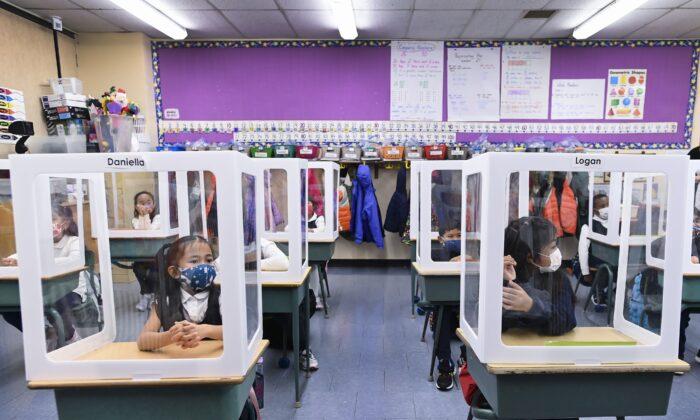COVID-19 cases are rising across Canada. Many provinces are seeing surges in hospitalization rates and even deaths.
This is why several provinces are enacting more severe restrictions. British Columbia and Alberta recently reduced private gathering limits while bars and restaurants are closed in much of Ontario. Meanwhile, Manitoba has reverted to a near-total lockdown in an effort to flatten its curve.
However, no province has yet ordered K-12 schools to close, although Ontario and Quebec are talking about having an extended Christmas break. While some individual schools have been shut down, every province has, so far at least, made considerable effort to keep students in school.
This is a dramatic change from last March, when every province and territory closed their schools in order to slow the spread of COVID-19. Most provinces kept schools closed for the remaining part of the school year.
Because there are far more COVID-19 cases now than in March, a number of parents and teachers have said that it’s time to close schools again. They argue that school closures are necessary to ensure the safety of both students and staff. While genuinely motivated by their concerns about public safety, these advocates are wrong. In fact, it’s more important than ever to keep schools open.
Back in March, we knew far less about COVID-19 than we do now. It was uncertain what impact this virus would have on children and there was serious concern that it would spread like wildfire in schools. Now we know that children are the group least susceptible to the virus and are the least likely to become hospitalized or die.
In addition, social distancing measures have worked reasonably well in schools even though many people, including myself, were skeptical that children would follow the necessary practices. While there have been many COVID-19 exposures in schools, the majority of these did not result in major outbreaks within schools. Teachers and other school staff have done an excellent job of keeping their students safe during the school day.
Earlier this week, Manitoba’s chief provincial public health officer, Dr. Brent Roussin, noted that schools are one of the safest places for children to be right now. That is why even though Manitoba is shutting down virtually all non-essential businesses for the next month, schools are scheduled to remain open.
It’s important to remember that closing schools has a significant negative impact on the health and well-being of students. For many students, school is where they receive healthy food, get proper medical advice, and have the opportunity to talk with caring adults. Forcing children to stay home would be devastating to the health and well-being of a significant proportion of children. These children, specifically, need to be in school.
It was widely reported that incidents of child-abuse increased dramatically during the spring shutdown. Without the ability to go to school, children in unstable and abusive homes were unable to receive reprieve from the abusive adults in their home. As well, teachers were far less likely to report suspected abuse since they couldn’t see or talk with their students in person.
When it comes to academics, there is no question that, for the vast majority of students, it makes far more sense to learn in person in their classrooms than remotely from their homes. Trying to teach Grade 1 students how to read via video conferencing is a nearly impossible task, no matter how hard teachers work to teach their lessons. As for older students, remote learning works well when it is intentionally designed and voluntary. Neither of those things, however, describes what remote learning looks like in the middle of a pandemic.
It’s important to remember that students are not adults and young students in particular will have difficulty understanding everything that is happening right now. Now, more than ever, they need a place where they can have at least some semblance of normalcy; where they have teachers who care about them and take their minds off the pandemic. It is also important for children to interact with other children. Even with strict COVID-19 health protocols, schools are still a place where students can experience stability and where they will learn things that they would not learn at home.
As we grapple with the second wave of COVID-19, we need to do everything we can to keep schools open. Our students deserve nothing less.





